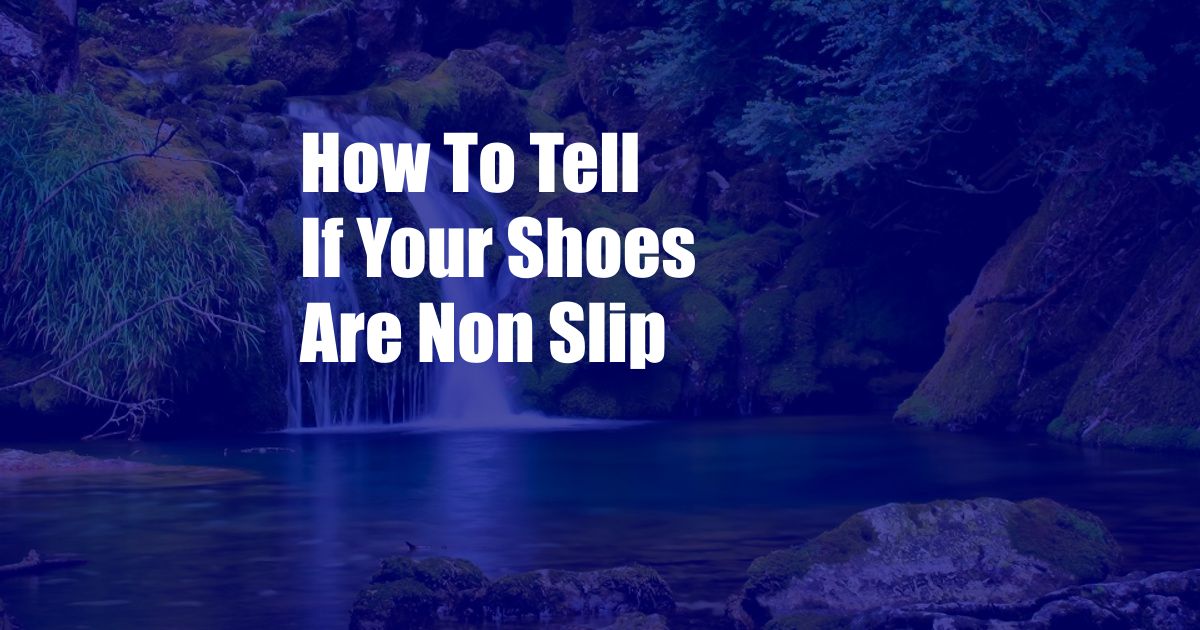
How to Check if Your Shoes Are Non-Slip
I remember the day I almost slipped and fell in the supermarket. It was a rainy day, and the floor was wet. I was wearing my regular sneakers, and they didn’t provide any traction on the slippery surface. I was lucky to catch myself before I fell, but it was a close call.
After that incident, I realized the importance of wearing non-slip shoes, especially when working in slippery conditions. Non-slip shoes are designed to provide traction on slippery surfaces, which can help to prevent slips and falls. There are a few different ways to check if your shoes are non-slip.
The ASTM F1677-05 Standard
ASTM F1677-05 is a standard test method for evaluating the slip resistance of footwear. This test is used to measure the coefficient of friction between a shoe and a variety of surfaces, including wet and dry surfaces. Shoes that meet the ASTM F1677-05 standard are considered to be non-slip.
The Heel Ramp Test
The heel ramp test is a simple way to check the slip resistance of your shoes. To perform this test, stand on a ramp that is inclined at a 9-degree angle. Slowly lean forward until your heel touches the ground. If your shoes slip, they are not non-slip. If your shoes do not slip, they are considered to be non-slip.
The Walk Test
The walk test is another simple way to check the slip resistance of your shoes. To perform this test, walk on a wet surface. If your shoes slip, they are not non-slip. If your shoes do not slip, they are considered to be non-slip.
Tips for Choosing Non-Slip Shoes
When choosing non-slip shoes, it is important to consider the following factors:
- The type of surface you will be working on. Some non-slip shoes are designed for specific surfaces, such as wet or oily surfaces.
- The type of work you will be doing. Some non-slip shoes are designed for specific types of work, such as food service or construction.
- The fit of the shoes. Non-slip shoes should fit snugly on your feet. Loose-fitting shoes can increase your risk of slipping.
Expert Advice
In addition to the tips above, here are some expert tips for choosing non-slip shoes:
- Choose shoes with a rubber sole. Rubber soles provide good traction on most surfaces.
- Look for shoes with a tread pattern. The tread pattern on the sole of the shoe will help to provide traction.
- Avoid shoes with a smooth sole. Smooth soles provide very little traction on slippery surfaces.
FAQs About Non-Slip Shoes
Q: What is the difference between slip-resistant and non-slip shoes?
A: Slip-resistant shoes provide some traction on slippery surfaces, but they are not as effective as non-slip shoes. Non-slip shoes meet the ASTM F1677-05 standard and provide a high level of traction on slippery surfaces.
Q: Do I need to wear non-slip shoes all the time?
A: It is not necessary to wear non-slip shoes all the time, but it is a good idea to wear them when working on slippery surfaces. This can help to prevent slips and falls.
Q: Can I make my regular shoes non-slip?
A: There are a few ways to make your regular shoes more non-slip. You can purchase non-slip shoe covers or apply a non-slip coating to the soles of your shoes.
Conclusion
Wearing non-slip shoes is an important way to prevent slips and falls. By following the tips in this article, you can choose the right non-slip shoes for your needs. If you have any questions or concerns about non-slip shoes, please consult with a safety professional.
Are you interested in learning more about non-slip shoes? Leave a comment below and I’ll be happy to answer your questions.